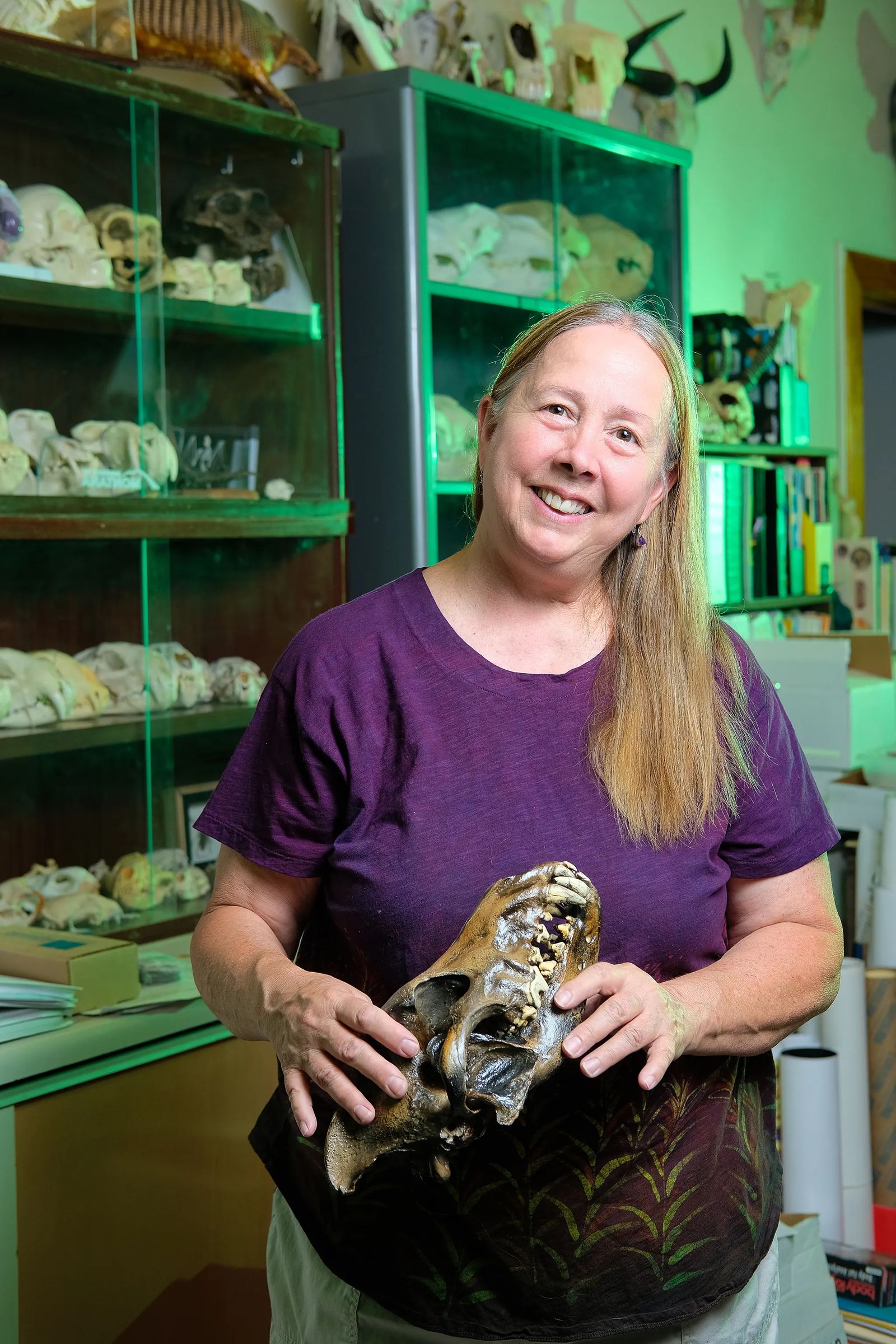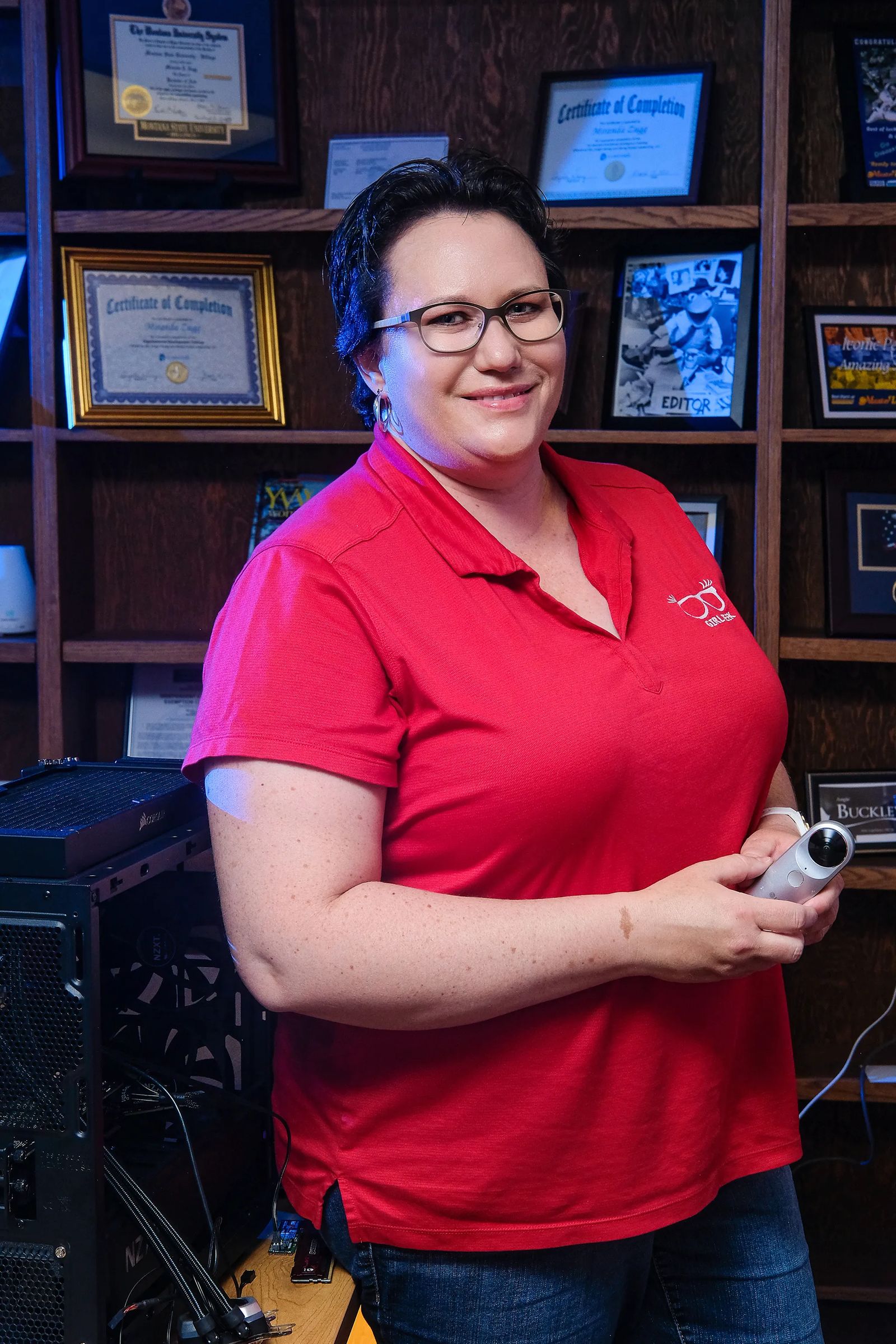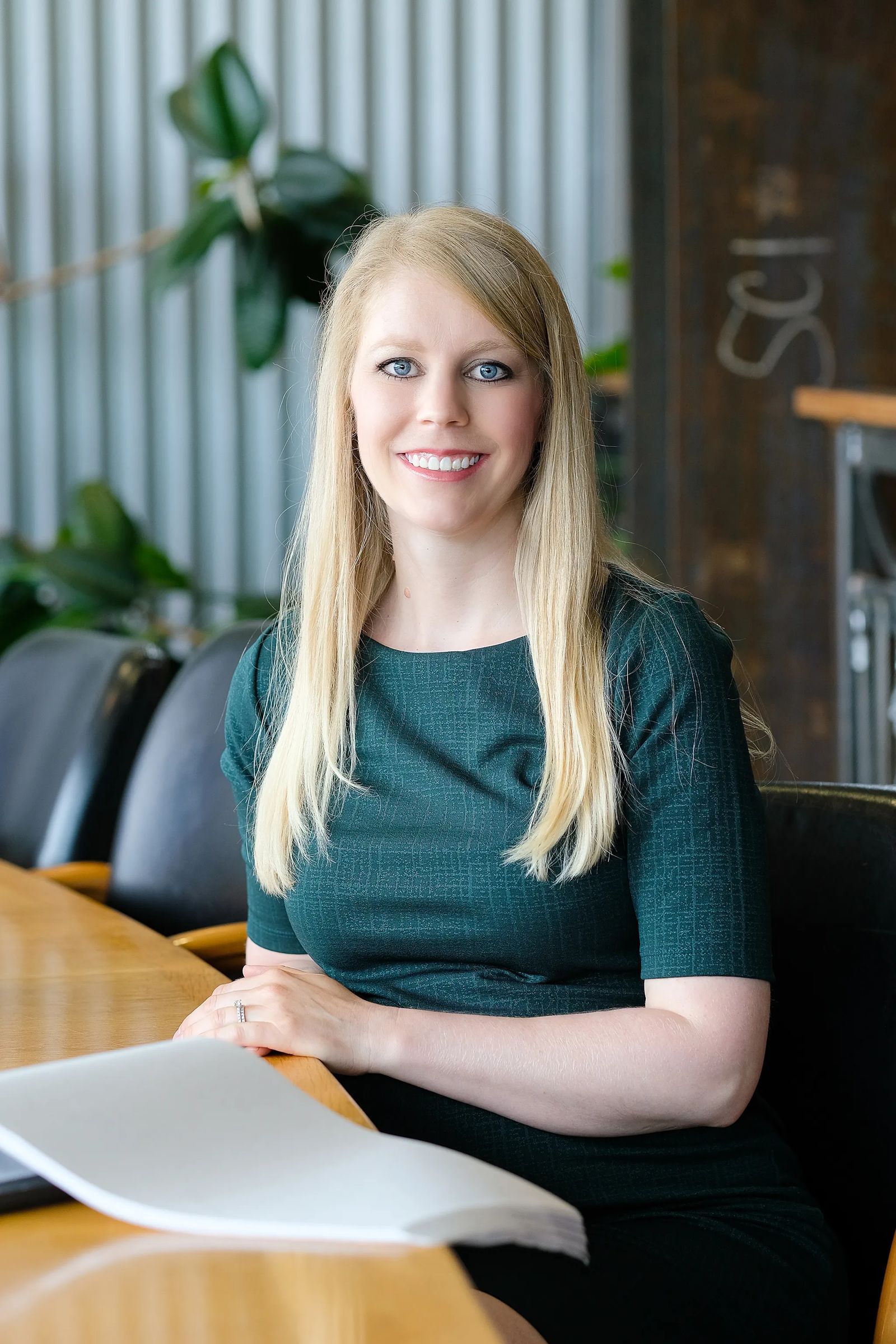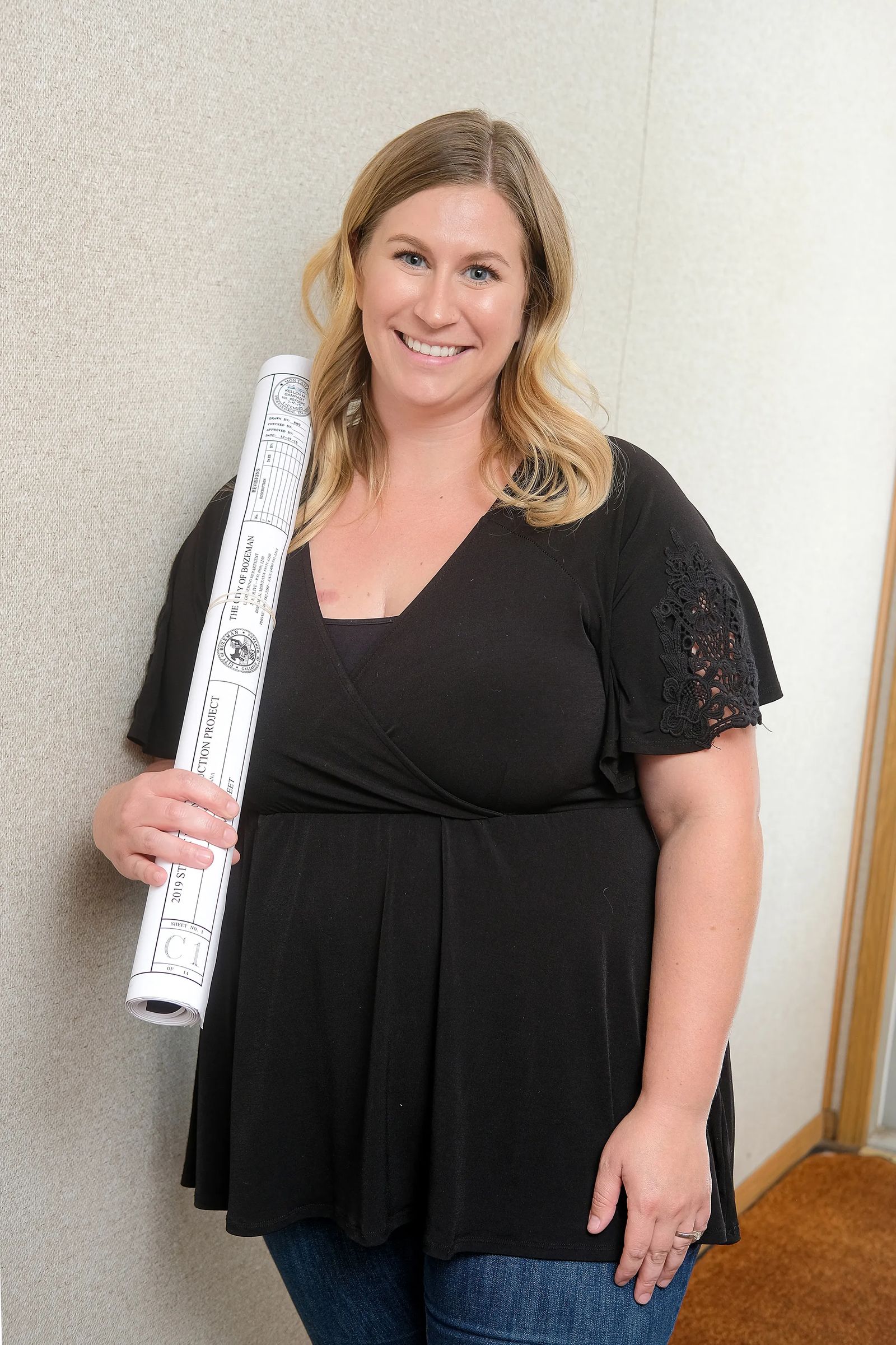
Women in STEM
Meet 4 Innovators, Teachers & Trendsetters
While there may be a shortage of Montana women working in science, technology, engineering and math (STEM), there is no shortage of greatness in the women who are working in those fields here in Billings. They are dedicated not only to their careers but to seeing that the next generation of women find their way. Let’s meet Four Women of STEM, a few of the movers and shakers who are making a difference in the Yellowstone Valley.
DEB WINES, Educator, Central High School
There’s nothing teacher Deb Wines likes more than to see her freshmen students tackle their first lab assignment. In the lab at Central High, among the beakers, microscopes and petri dishes, is where the magic happens, and if Wines has her way, she’ll ignite in her students an appreciation for science and an understanding of the role it plays in our everyday lives.
“I’m not just trying to foster an interest in kids to become scientists,” Wines says. “My goal is scientific literacy.”
For the past 16 years, Wines has taught freshman biology, advanced placement (AP) biology, and AP environmental science.
Science is all around us, she explains. It’s a part of everything we do and influences every decision we make. It’s critical to a thriving society, economy and culture, and everyone has a responsibility to understand that role. It begins with curiosity, which comes easily to young people, and Wines is passionate about teaching them to think critically.
“The most important part of science is to ask a question,” she says. “We don’t know everything about everything.”
Wines is a believer in taking her teaching beyond the classroom for what she calls “hands-on, minds-on” activities. Her classes take numerous field trips during the school year, and each summer she leads students in science-based travel experiences. In recent years, she’s taken students to Costa Rica, Belize and the Galapagos Islands.
Each year, a few of Wines’ students pursue higher education in science. Only a few of them are young women. While science is seeing a shift, the traditional sciences are still dominated by men.
“For that to change, girls need role models and a support system along the way,” Wines says. “It’s really hard for women in science. It’s getting better but it’s still hard.”
Wines believes that early learning experiences play a big role in sparking an interest in science, and she encourages parents to take advantage of the access we have to the natural world. Even a walk in the park can lead to “scientific” discovery. Parents of young children can experiment with what floats and what sinks and look for patterns in nature. A look at the night sky or a close-up look at a grasshopper could spark interest.
“It’s about getting out with them and playing with things,” Wines says.
Wines is still fueled by that same child-like curiosity, and she takes at least one trip a year to advance her understanding of emerging science. It’s her version of professional development, and it usually leads to a new lesson or two in her classrooms. For Wines, life is all about the joy of discovery.
“I truly am a science geek,” she says.

MIRANDA GILBERT, Owner and Founder, Girl Geek, LLC.
Miranda Gilbert’s Spanish is elementary at best. She took only one college Spanish class, but that didn’t stop her from volunteering to edit Spanish language safety training videos. She laughs looking back on it now. Gilbert admits it was crazy, but all she wanted was to learn to use the editing software. Diving right in – even if it was in Spanish -- seemed like the best way to learn. It was bumpy, but Gilbert finally mastered the technology. It didn’t help her Spanish, however.
Technology, in one way or another, has always been her passion, so it’s fitting that Gilbert is the owner and founder of Girl Geek, LLC, a digital marketing agency. Through a variety of services, she helps businesses become established on the web and expand their online presence. She designs and maintains websites and manages social media and email marketing for about 40 companies. She’s also an accomplished graphic designer and builds computers in her free time.
“All day, every day, all day long, I’m using technology,” she says.
Gilbert couldn’t be happier. Her fascination with technology goes back to childhood when she took apart – and repaired – the family’s VCR.
“I’ve always been a problem solver,” Gilbert says. “I’ve never been intimidated by technology. Everything from building a website to fixing a printer, I learned to never say no and just give it a shot.”
While women make up about half the workforce nationwide, they represent only about 35% of all STEM workers. They make up 12% of the engineering workforce and 26% in the fields of computer science and mathematics – US Department of Labor, aauw.org
Her interests took her to study mass communications in college, but her love for technology paved the way for many of her career opportunities. It wasn’t until she was 34 before she decided to launch her own business.
“People say that when you want to find out what you want to do with your life you should look back at what you wanted to do in kindergarten. I told people I wanted to own a toy store,” Gilbert says.
That got her thinking, and she realized what she wanted to do was share what she loved with people. At age 5, that was toys, but her love now was digital marketing and technology. Within the month, she incorporated her business and set off on her own.
Staying on top of all the emerging trends and changes to technology and social media marketing is one of her greatest challenges, and Gilbert spends a good portion of her week reading up on those changes so her clients can leverage the latest trends.
“It’s constant,” she says. “I feel like if I were to take a two-week vacation, I would be behind on everything.”
Whenever Gilbert meets young people wondering what career path to take, she encourages them to consider all their interests – but stay tech-friendly. It will be a part of everyone’s life long into the future, she says.
“Let’s just embrace technology as a tool,” she adds.
It’s certain that technology will continue to change, and Gilbert believes the people who are willing to take a risk and try something new will be the ones who can manage that change for the long run.
“You can’t be afraid to fail,” she says. “You have to figure it out. If you don’t try, then you’ve already failed. It’s scary, but there will always be another set of challenges around the corner.”

SHANNON CHRISTENSEN, Associate Principal Architect, CTA Architects and Engineering
Growing up in Circle, Montana, Shannon Christensen liked to draw and remembers a seventh-grade woodshop class where she was introduced to drafting. She was fascinated by the various perspectives that she could see in a pile of blocks. She didn’t know it then, but the experience set her on a course to her career as an architect.
“Living in a small town, I didn’t know any architects, but luckily I had parents who saw my interest and helped me pursue it,” Christensen says.
Christensen is an associate principal architect at CTA Architects and Engineering, and her role these days is primarily leadership. Working at a strategic level, she oversees 40 team members and their various design projects. She enjoys collaboration, and that’s a key part of her career.
“I’ve never worked on a project solely by myself,” Christensen says. “It’s always been collaborative.”
Nationwide, about 35 percent of all architects are women, and that number has been steadily rising for the past couple of decades. Christensen says the field could use even more women, especially in Montana.
“Women bring a different perspective,” she says. “We’re consensus builders and we can look for the threads that tie things together in different ways and create opportunities to move things forward.”
In Montana, STEM jobs make up about 12% of all employment, and the majority of Montana’s STEM workforce are employed in healthcare. – Montana Department of Labor
Christensen believes girls could use more encouragement to consider careers in STEM, and she is passionate about providing girls with the opportunity to experience STEM careers. She’s on the board of the Billings Education Foundation and a presenter at the annual Girls-N-Science event at Montana State University Billings. She loves the opportunity to job shadow with young women who are interested in architecture and engineering.
“I’ve had really good mentors, sponsors and advocates along the way. I like to be able to do that now too,” she says.
While Christensen is a tireless promoter of careers in architecture and engineering, she’s also serious about other skills as well. She’s learned that not only does she use her architecture education, she also relies heavily on her writing, presentation and public speaking skills.
“Step up for things that might not be obvious career advancers,” she suggests to women interested in a career in STEM, “and look for different ways to get involved in leadership. It can be easy to get focused but you don’t want them to forget those other skills.”

OLIVIA POETTMANN, Estimator, COP Construction
Math never came easy to Olivia Poettmann, so it might come as a surprise that her career – every day -- is math, complicated high-level math. Poettmann is a construction estimator, and with every day and every calculation comes a sense of accomplishment that makes her work rewarding.
“If you love something, people think it should be easy, but that isn’t always the case,” she says. “It’s never come easy for me, but that’s what I like about it – the challenge.”
Poettmann is an estimator for COP Construction. Based in Billings, COP is a civil construction company that specializes in major public infrastructure projects including water treatment facilities, underground utilities and highly technical highway, street and bridge construction. Poettmann’s job is to estimate the cost, labor and materials needed for a project, and she’s the company’s lead when it comes to complicated large-scale projects.
“What’s attractive to me is the problem-solving,” she says. “In estimating you’re trying to figure out every possible problem you can see in the future before you even begin.”
Poettmann started out with an interest in engineering, and while in her first college engineering class, she became interested in civil engineering. Later she discovered that it wasn’t the design she was interested in. She liked being in the field, watching the progress and seeing projects through to the end. As an estimator, her expertise is needed throughout the project.
“It’s very rewarding to be there for the entire process,” she says.
When visiting construction sites for the initial pre-bid meeting, Poettmann is almost always the only woman there. That’s not surprising. Women make up less than 10 percent of the workforce in the construction field. Poettmann is hoping to change that. She is a member-at-large of the National Association of Women in Construction. The organization is a resource for women working in construction and those considering it as a career. There is not a chapter in Montana, but Poettmann is working to organize one.
“It’s comforting to have a network of other women,” she says. “You can ask what may feel like a dumb question or ask for help with a situation on a job site.”
Collaboration and teamwork often come more naturally to women, Poettmann says, and they provide a unique point of view.
“It just brings another player to the team, and maybe someone else will see it differently,” she adds.
HELP WOMEN GROW IN STEM CAREERS
What can you do to help the girls in your life consider a STEM career path? Foster their confidence in STEM subjects. Teach girls that their academic abilities in all subjects can be improved. Expose girls to female role models who have succeeded in STEM careers. – National Center for Education Research












